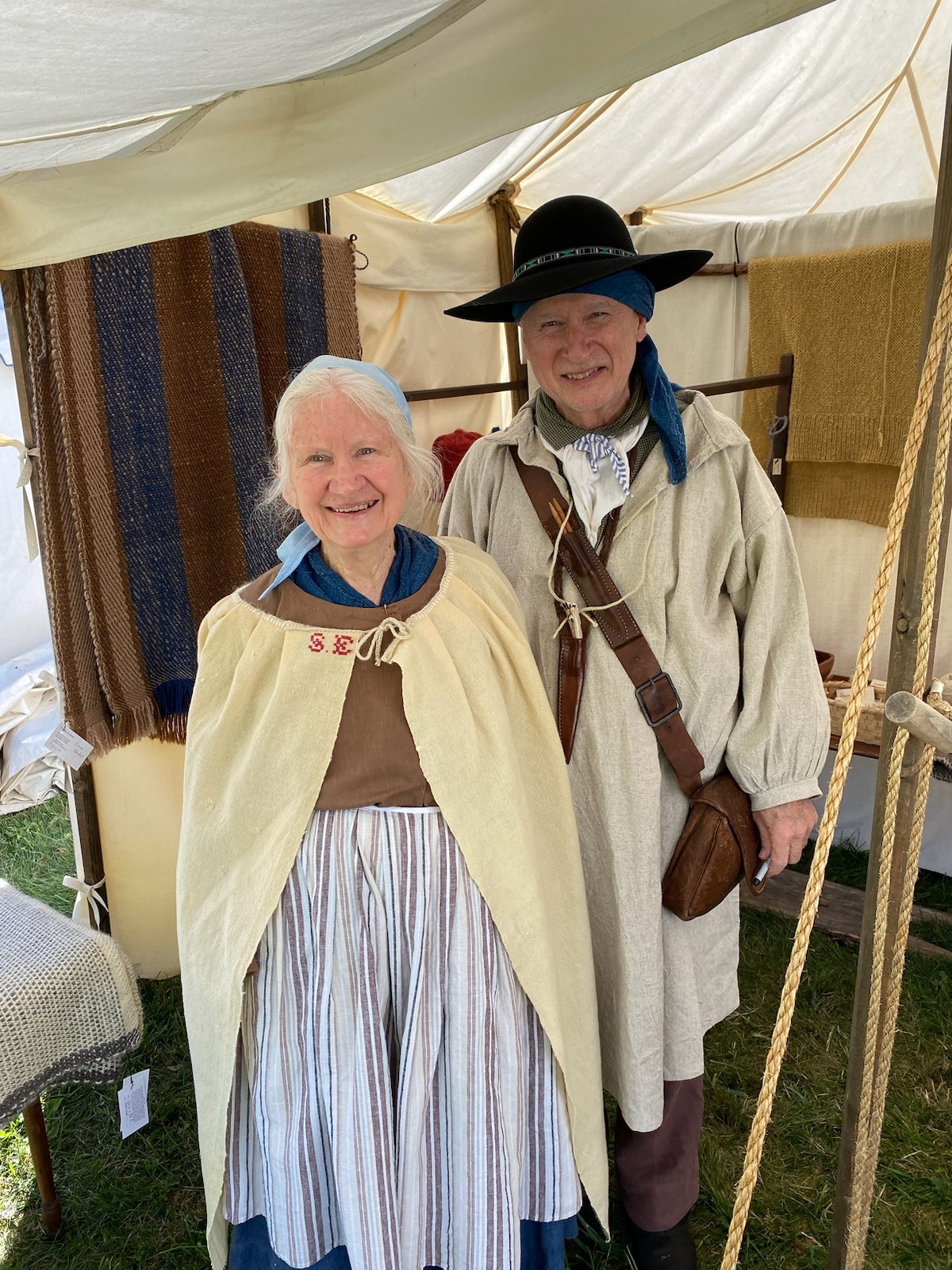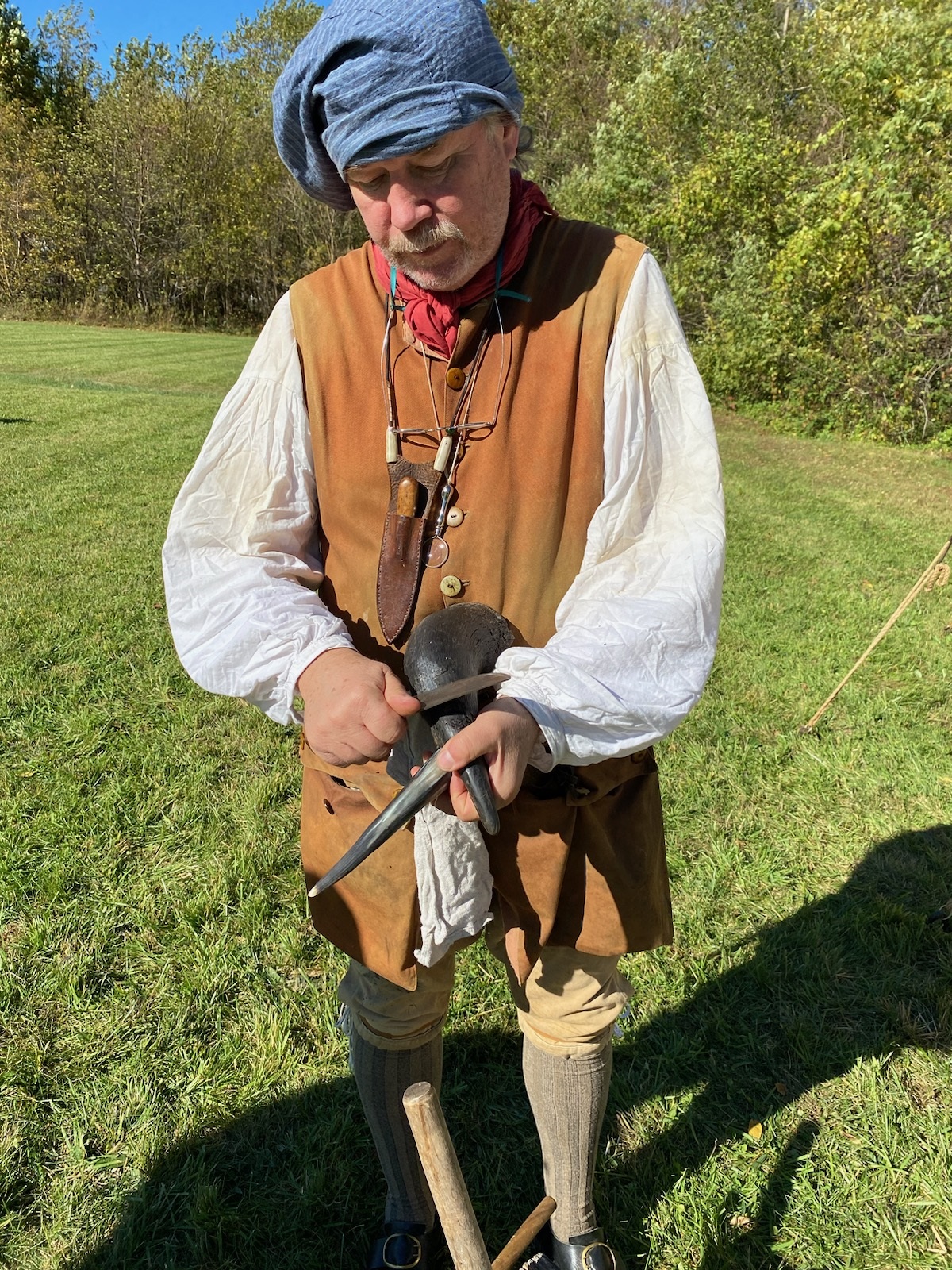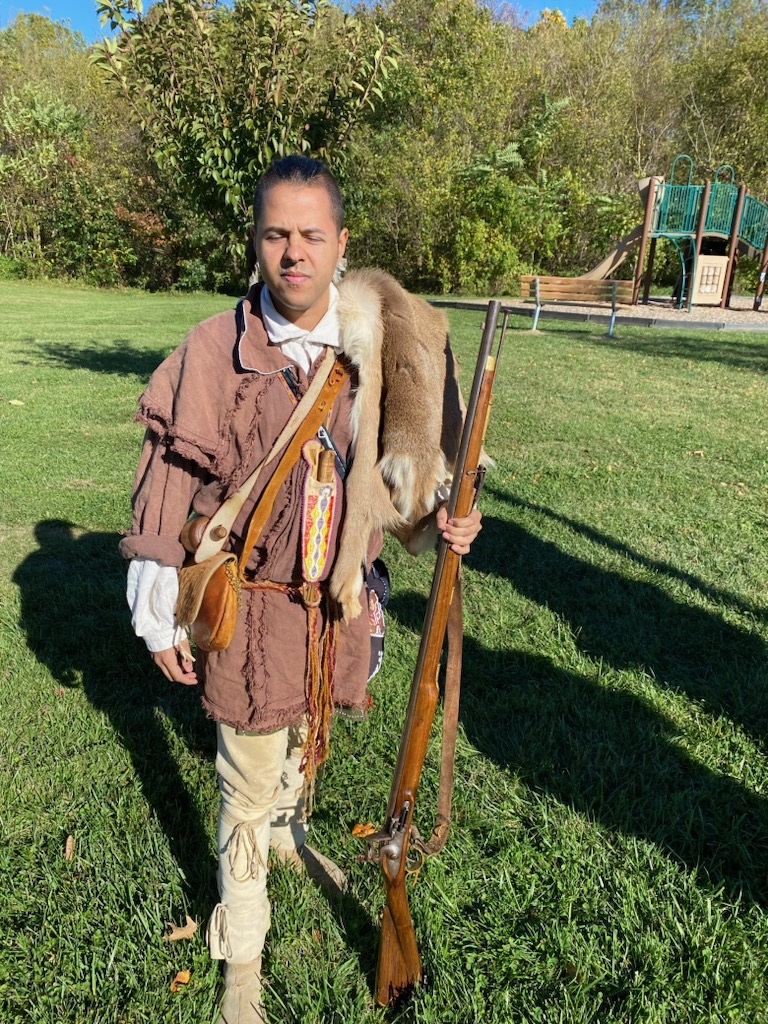Photos by Lori Graham



Lori Graham
Contributing Writer
The Great Road Encampment in eastern Montgomery County’s Elliston community provided visitors the distinct opportunity to take a step back in time to the 18th century during the two-day event, Saturday Oct. 21 and Sunday, Oct. 22.
It was a time residents of the southwest Virginia region were preparing to revolt and gain independence from England’s rule during the Revolutionary War.
The Great Road was the main thoroughfare going west to the frontier and was traveled by many great historical figures and prominent political figures such as George Washington, Daniel Boone, Andrew Lewis, and the Ingles and Draper families.
Previously, the event was held in August, but the organizers and event demonstrators voted to move the date to October to take advantage of the cooler temperatures.
Janice and Hunter Hensley own Windhill Woolens and are wool spinners and weavers as well as wood art workers.
“We still get the fleece directly from the sheep, we don’t own sheep anymore, but we did for 27 years,” Janice Hensley said. “We take it straight through, as close as we know how, as the way it was done historically.”
The Hensleys can also be found at other local historical arts and crafts events in the region, such as a recent event at the Floyd Fine Arts Center, where they share their expertise and historical knowledge on wool products.
“There were no mills in this country until the revolution was well underway, no mills, you bought all your wool from England or somewhere else,” Janice Hensley said. “England controlled all the wool. You made your own clothes, or you bought theirs. Unless you own sheep, and you could weave and spin and so on, you bought blankets from Britain and that’s all there was to it.”
By the time of the Revolutionary War, Hensley said, there were few people who knew how to process wool into clothing, blankets, and other necessary items.
“The Wool Act was 1699. From that time on, it was against the law to do anything with your wool except for yourself. Somebody like me would not have been permitted,” Hensley said. “It was wool in any form, doesn’t matter what, even your sheep. The British brought your sheep, so folks would hide their sheep over the hill if they got wind that they were coming to check. You had to sell your sheep to them unless it was family.”
Scrimp in Time, owned by Mark Bradbury, showcases the artful tradition of scrimshaw, or the scrolling, engraving, and carving of an animal horn.
Bradbury sat outside his tent at the encampment, demonstrating the art of taking a buffalo or ram horn from a rough exterior to a smooth finish. He then will scroll an intricate design on the outside of the horn’s exterior, often using Gaelic symbols and words from Ireland.
“The horn is made of the same substance as your fingernails, carotene. So, all’s I’m doing is being a manicurist of the horn,” Bradbury said. “It is growing from the skull out, the same as your fingernails, so I will go with the grain. Then it starts to smooth out.”
The horns were originally used for carrying gun powder, but Bradbury now makes flasks with the various horns. Another use of the horns are making them into shot glasses, which are unbreakable.
“In the 18th century, everything had to have a container of some sort,” Bradbury said. “These were very popular in your taverns, as well as jack ware. Ceramic and pottery was very expensive and also broke when a drunk dropped it.”
Bradbury, like many of the other demonstrators and traditional art crafters, complete the process themselves as closely to the historical production as possible.
Justin DiProsperis is a Native American reenactor as well as a descendant of the Monacan tribe, an inland group of Virginia. Fully dressed in 18th century period clothing, which is a blending of Native American and European materials. DiProsperis explained how quickly the traditions of the native people were overtaken by those of the Europeans.
“The last time that we were really living our old way and in our old towns, the Colonials came upon one of our last towns in Madison Heights, just on the other side of Lynchburg. That was 1741, and about 10-15 years later, the town disappeared.”
Diseases such as smallpox and cholera, some introduced to the area by Europeans, were difficult for the Native Americans to overcome and devastated their communities. New materials such as steel and cotton were also integrated into the Native American tribes and trade became a lucrative way for Europeans to also acquire animal hides, pottery and other products from the natives.
Steel was introduced to the native people and replaced their weapons of stone, DiProsperis said. Native Americans would trade animal skins and pelts, especially beaver as they were almost extinct in Europe by this period, in exchange for steel weapons, pots, and garden tools. The use of these new tools replaced their bone- and clay-made materials.
“Which is the destruction of the culture. Once we have these steel knives, we stop making the stone knives and stone axes. Once we stop making them, then we forget how to do that and you can’t pass that on to your children” DiProsperis said. “Not just simply through warfare, through bigotry, and through disease, but also in what we do.”
More information about the Great Road Encampment event can be acquired from organizer Henry Bryant, at greatroadencampment@gmail.com. Bryant is also an 18th-century reenactor as well as a leather worker and owner of Fort Vause Outfitters in the Elliston community on Big Spring Drive.


